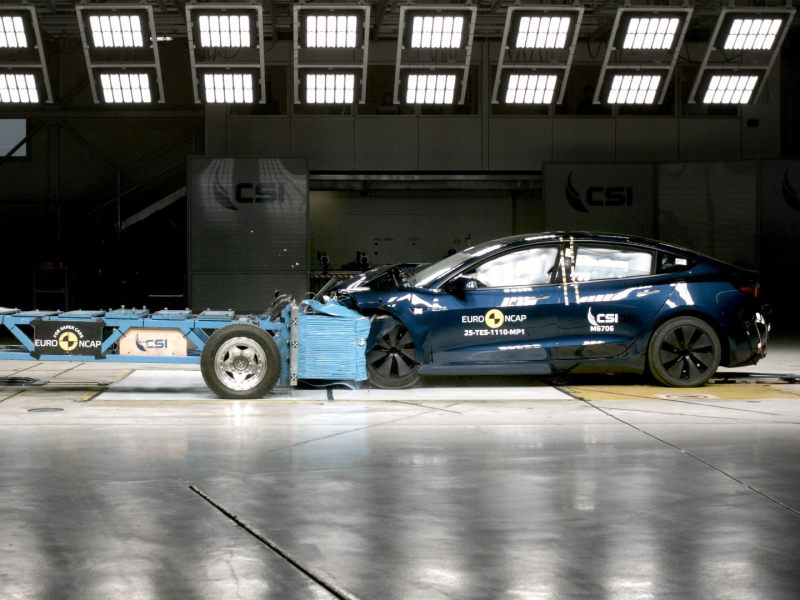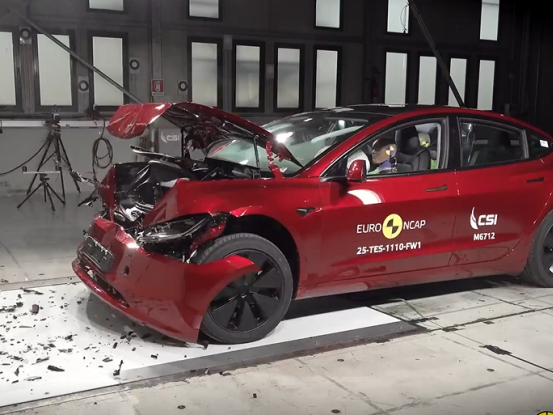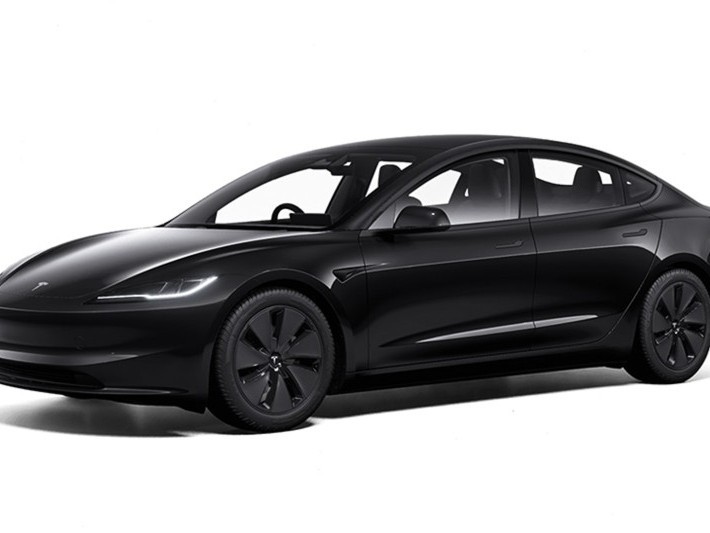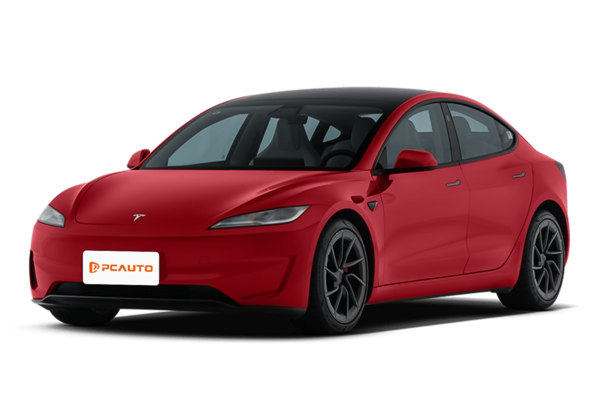Q
how much is insurance on a tesla model 3
In Malaysia, insurance costs for the Tesla Model 3 can vary quite a bit depending on several factors, but you're generally looking at around RM3,000 to RM6,000 annually. The exact figure hinges on things like the specific Model 3 variant – think Standard Range Plus versus Performance – the owner's age, driving history, where you live, and the type of coverage you opt for, whether that's comprehensive or just third-party.
For instance, younger drivers or folks living in high-traffic areas like Kuala Lumpur might end up paying more, while those with a clean driving record could score some discounts. Also, EV insurance does tend to be slightly pricier than for traditional petrol cars, partly because repair costs can be higher and parts often have to be imported.
It’s definitely worth shopping around and comparing quotes from different insurers before making a decision. Also, make sure you understand the fine print, especially regarding any special clauses for the battery or charging equipment. As a high-tech EV, the Model 3’s insurance pricing does take into account its advanced safety features, like Autopilot – some insurers might even offer discounts for that.
Special Disclaimer: This content is published by users and does not represent the views or position of PCauto.
Related Q&A
Q
What Segment is Tesla Model 3?
The Tesla Model 3 falls into the D-segment category (also known as the "mid-size car" or "Executive Car" niche). This segment typically includes mid- to high-end models with a body length of around 4.6 to 4.9 meters and a wheelbase of 2.7 to 2.9 meters. Its competitors encompass traditional luxury brand models like the BMW 3 Series and the Mercedes-Benz C-Class.
In the Malaysian market, the Model 3 has become a key choice for local consumers to access high - end electric vehicles, thanks to its advantages in electrification technology (such as a range of up to 491 kilometers under the WLTP standard on a single charge) and intelligent features (like Autopilot assisted driving). Notably, the Malaysian government offers preferential policies such as exemption from import duties for electric vehicles, making the Model 3 more price - competitive locally.
The D - segment cars, with their moderate body size (for example, the Model 3 is 4,720mm long), combine flexibility and space practicality on Malaysian city roads, making them particularly suitable for congested urban environments like Kuala Lumpur. Other electric options in the same segment include the BYD Seal and the Hyundai Ioniq 6. However, the Model 3 still maintains a significant edge, thanks to Tesla's well - established charging network (12 Supercharger stations have been deployed across Malaysia).
Q
What is the Reslae Value of Tesla Model 3?
The Tesla Model 3 has a relatively high second - hand resale value in Malaysia. This is mainly due to its brand influence, the maturity of electric vehicle technology, and low maintenance costs. According to market observations, the Model 3 can still retain about 60 - 70% of its residual value after three years of use, which is better than many fuel - powered vehicles in the same class. This is related to its long battery life, continuous software updates, and the improvement of charging infrastructure.
For Malaysian consumers, the tax - exemption policy for electric vehicles further reduces the cost of purchasing a car, indirectly increasing the demand in the second - hand market. In addition, Tesla's global unified pricing strategy reduces price fluctuations, making the second - hand car prices more stable.
If you're considering buying a Model 3, it is recommended that you pay attention to the battery health and warranty period, as these factors can significantly affect the resale value. Meanwhile, the gradually expanding charging network in Malaysia also makes the use of electric vehicles more convenient, which will help maintain its second - hand market performance in the long run.
Q
What is the PCD Size of Tesla Model 3?
The PCD (Pitch Circle Diameter) of the Tesla Model 3 is 5x114.3 mm. This means that its wheels have 5 bolt holes, evenly distributed on a circle with a diameter of 114.3 mm. This is a common specification for many modern cars, especially widely used in Japanese and some European models. For Malaysian car owners, it's very important to know the PCD size because it's a key parameter when replacing wheels or upgrading the braking system, ensuring that the new wheels match the original vehicle perfectly. Additionally, the PCD size also affects the vehicle's handling and safety. An incorrect PCD may lead to the wheels not being installed properly or vibrations during driving.
The wheels of the Tesla Model 3 are also compatible with wheels having a center bore diameter of 64.1 mm, and the bolt thread specification is M14x1.5. These details need to be noted when purchasing modified wheels. Since the climate in Malaysia is rainy and humid, it is recommended that car owners choose high - quality wheels and regularly check the bolt tightening to ensure driving safety.
Q
Does Tesla Model 3 Support Apple Carplay?
Currently, the Tesla Model 3 doesn't support the Apple CarPlay feature. This is mainly because Tesla adheres to using its self - developed Infotainment system. This system integrates functions such as navigation, entertainment, and vehicle control, aiming to offer an integrated user experience. Although Apple CarPlay is a standard or optional feature in many other brands' models, Tesla owners can achieve similar functions through its built - in streaming services, Bluetooth connection, or the Tesla mobile app.
For users in Malaysia, Tesla's local services are gradually being improved. For example, it supports local maps and voice commands. So, even without Apple CarPlay, daily use remains convenient. If you have high requirements for in - vehicle connectivity functions, you can look into some models from other brands like BMW, Mercedes - Benz, or the local brand Proton. These models usually offer Apple CarPlay support. However, Tesla's unique advantage lies in its highly integrated system and OTA update capability, which can continuously bring new features to users.
Q
What is the Tyre Brand of Tesla Model 3?
The common original - equipment tire brands for the Tesla Model 3 in the Malaysian market include Michelin, Bridgestone, and Goodyear. The specific configurations may vary depending on the vehicle model version or production batch. For example, the high - performance version may be paired with tires like Michelin Pilot Sport 4S, which focus on grip. The selection of these international brands is to balance the instantaneous torque requirements unique to electric vehicles, low - noise performance, and range optimization. In particular, Michelin's noise - reduction technology can effectively offset the road noise that becomes more noticeable due to the lack of engine noise in electric vehicles.
It's worth noting that Malaysia has a tropical climate with frequent rainfall. Car owners can pay attention to the wet - road performance indicators of tires (such as the AA traction rating in the UTQG grade). When replacing tires, they can also consider the commonly seen Continental from Germany or locally - assembled Japanese brands like Yokohama, which also have formulations suitable for high - temperature and rainy road conditions. Tesla service centers usually recommend suitable replacement tires based on the road conditions in Malaysia. It is recommended that car owners regularly check the tire pressure to ensure it is within the numerical range required for electric vehicles, which is particularly important for maintaining the driving range.
Q
Is Tesla Model 3 a Good Car? Learn the Pros and Cons Here
As a pure - electric sedan, the Tesla Model 3 has a certain appeal in the Malaysian market. Its advantages include excellent acceleration performance, advanced autonomous driving assistance features, and relatively low daily usage costs. In particular, the electricity cost is more economical compared to that of fuel - powered vehicles, making it suitable for urban commuting in Malaysia. Additionally, the Model 3's high - tech interior design and OTA remote upgrade function also provide users with a convenient experience.
However, its drawbacks are also worth noting. For instance, given that the charging infrastructure in Malaysia is not fully popularized, long - distance travel may encounter the problem of inconvenient charging. Meanwhile, the relatively high initial purchase price and the later battery replacement cost may also make some consumers hesitate.
For Malaysian users, if their daily commuting distance is short and there are charging facilities at home or in the workplace, the Model 3 is a good choice. But if they often need to drive long - distance, they may need to plan the charging route more carefully.
Overall, the Model 3 stands out in terms of environmental protection and technology. However, before making an actual purchase, it is necessary to comprehensively consider personal vehicle - using needs and budget.
Q
What is the Width of Tesla Model 3?
The body width of the Tesla Model 3 is 1,848 millimeters (excluding mirrors). This dimension performs excellently in the urban driving environment in Malaysia. It's suitable for maneuvering through narrow streets while still offering a spacious interior. The Model 3's streamlined design not only optimizes the drag coefficient to improve the range but also incorporates an advanced layout of cameras and sensors to support the Autopilot intelligent driving function.
For Malaysian consumers, the width of the Model 3 is similar to that of common mid - sized Japanese or European sedans in the local market. However, its electric platform structure allows for higher utilization of interior space, especially in the rear legroom. Notably, since electric vehicles don't require the traditional transmission structure, the central floor is completely flat, which further enhances the seating comfort.
Against the backdrop of the increasing popularity of charging facilities in Malaysia, the Model 3's compact size and efficient energy consumption make it an ideal choice for urban commuting. Meanwhile, its high - tech interior and OTA remote upgrade function also meet the preferences of the local young consumer group for smart cars.
Q
What is the Road Tax Price of Tesla Model 3? How to Calculate?
In Malaysia, the road tax price for the Tesla Model 3 is calculated based on the electric vehicle's motor power (kW), rather than the engine capacity of traditional fuel-powered vehicles. This is a special policy implemented by the Malaysian government for electric vehicles. According to the current regulations, the formula for calculating the road tax for electric vehicles is: a charge of RM20 per kilowatt (kW). For example, the rear - wheel - drive version of the Tesla Model 3 has a motor power of 208kW, so its road tax would be 208 x RM20 = RM4,160. The high - performance all - wheel - drive version has a motor power of 377kW, and its road tax would be 377 x RM20 = RM7,540.
It should be noted that electric vehicles in Malaysia enjoy road tax exemption benefits. As of the end of 2023, the government has temporarily waived the road tax for electric vehicles. Therefore, currently, Tesla Model 3 owners do not need to pay road tax. However, future policies may be adjusted, and it is recommended to follow the latest announcements from the Malaysian Ministry of Transport.
In addition, electric vehicles in Malaysia also enjoy preferential policies such as import tax and consumption tax exemptions. These policies aim to encourage more people to choose environmentally friendly vehicles and reduce carbon emissions.
If you are considering buying a Tesla Model 3, apart from the road tax, you can also learn about practical information such as the distribution of charging facilities and the installation of home charging piles to better plan your vehicle - using life.
Q
What is the Second Hand Price of Tesla Model 3? Check Used Price Here
In Malaysia, the price of used Tesla Model 3s is influenced by factors such as the vehicle's age, mileage, configuration, and condition. Currently, the price range is approximately between 120,000 and 180,000 Malaysian ringgit, depending on the specific circumstances of the vehicle. For example, a 2020 standard - range version with low mileage might cost around 120,000 ringgit, while a well - conditioned 2022 long - range or performance version could reach about 180,000 ringgit.
When buying a used electric vehicle, it's advisable to check the battery's health status and the remaining warranty period. Tesla's official battery warranty usually lasts for 8 years or 160,000 kilometers, which is an important guarantee for second - hand buyers. Moreover, the Malaysian government offers tax incentives for electric vehicles, such as exemptions on import and sales taxes, which indirectly enhances the cost - effectiveness of used Teslas.
If you're considering buying a used Model 3, it's recommended to go through official certified channels or reputable used - car dealers. This ensures that the vehicle has undergone professional inspections and comes with a complete warranty service. Plus, you'll enjoy a more transparent transaction process.
Q
What is the Tyre Pressure of Tesla Model 3?
The recommended standard tire pressure for the Tesla Model 3 is 2.9 to 3.1 bar (42 to 45 psi). The specific values may vary slightly depending on the vehicle configuration or tire model. Owners can find the official recommended values on the label of the door frame or in the vehicle manual. In Malaysia, where the climate is hot, the tire pressure will increase slightly as the temperature rises. It is recommended to check the tire pressure at least once a month, especially before long - distance driving, to ensure driving safety and energy - efficiency. Using a Tire Pressure Monitoring System (TPMS) can monitor the tire pressure status in real - time. If the tire pressure is too low, it will increase tire wear and energy consumption; if it is too high, it will affect the grip and comfort. It's worth noting that for electric vehicles, due to the special distribution of battery weight, maintaining the correct tire pressure is particularly important for the range performance. At the same time, it is recommended to choose the original - certified tires to meet the vehicle's performance requirements.
Latest Q&A
Q
How much is a new Toyota Yaris 2025?
The all-new 2025 Toyota Yaris is expected to hit Malaysian showrooms with a price tag ranging from RM 70,000 to RM 90,000, though the final figure will depend on the trim level and any optional extras you tick. The base model will likely stick with the tried-and-tested 1.5L naturally aspirated engine paired with a CVT gearbox, while higher-spec variants should come loaded with more safety tech, including the Toyota Safety Sense suite – think pre-collision warning and lane-keeping assist, for starters.
In the local B-segment hatchback scene, the Yaris has always been a hit thanks to its fuel efficiency, reliability, and nimble handling. What sets it apart from rivals like the Honda City Hatchback or Nissan Almera? A sportier exterior design that gives it a bit more attitude.
But hey, don’t forget to factor in extra costs like road tax, insurance, and registration fees when budgeting – those can add up. Your best bet? Swing by an authorized Toyota dealer to check out the latest promos. Toyota Malaysia often runs deals like low-interest financing or free service packages, which are definitely worth asking about.
Oh, and keep an eye out for the 2025 model’s upgraded infotainment system – rumor has it wireless Apple CarPlay and Android Auto might finally make the cut, making your daily drive that much more convenient.
Q
How much horsepower does a 2025 Toyota Yaris have?
Toyota hasn't officially spilled the beans on the exact horsepower figures for the 2025 Yaris in Malaysia just yet. But if we take a peek at the current model's powertrain setup, it's a safe bet we'll still see the 1.5-liter four-cylinder naturally aspirated engine making a return. We're probably looking at around 106 to 110 horsepower, paired with that trusty CVT gearbox – perfect for zipping around the city and keeping fuel costs in check.
Now, if they decide to bring in the GR Sport performance trim, that's where things could get interesting. Word on the street is it might pack a punch with a 1.6-liter turbocharged engine, potentially cranking out over 200 horsepower. But hey, don't hold me to that until Toyota Malaysia makes it official, right?
Here's the thing though – horsepower isn't the be-all and end-all when it comes to a car's performance. Torque delivery, how light the body is (thanks to the TNGA platform the Yaris uses), and how efficient the transmission is all play a huge role too.
So, for Malaysian buyers, it really boils down to what you need. If you're mostly using it for daily commuting, the standard Yaris with its focus on fuel efficiency is going to be the practical choice. But if you crave a bit more driving excitement, keep an eye out for any news on that sportier variant they might bring in later.
Also, let's not forget Malaysia's hot and humid climate, which can really test an engine's cooling system and a gearbox's durability. Regular maintenance is key to keeping that powertrain running in tip-top shape.
Q
What kind of engine is in the Toyota Yaris GR 2025?
Under the hood of the 2025 Toyota Yaris GR lies a 1.6-liter three-cylinder turbocharged engine, a powerplant renowned for its impressive output and efficiency. Cranking out a solid 257 horsepower and a healthy 360 Nm of torque, it pairs with a slick 6-speed manual gearbox or an optional automatic, delivering a genuinely engaging driving experience that enthusiasts crave.
This engine isn't just about raw power, though. It's packed with advanced turbocharging tech and direct injection, which not only boosts performance but also keeps fuel economy in check – a real plus for Malaysia's diverse driving conditions. Whether you're navigating busy city streets during the daily commute or carving up twisty mountain roads on the weekends, this little hot hatch handles it all with confidence.
And let's not forget the GR-Four all-wheel-drive system. It's a game-changer, significantly upping the car's grip and stability, especially when the rain starts to pour and the roads get slippery. For Malaysian petrolheads, the Yaris GR isn't just another peppy hatchback; it's a labor of love from Toyota's Gazoo Racing division, a testament to the brand's deep-seated expertise in crafting thrilling, sporty machines.
Sure, there are other players in the hot hatch segment, each with its own set of strengths. But if you're after a package that balances performance, everyday usability, and Toyota's legendary reliability, the Yaris GR is definitely one that should be high on your shortlist.
Q
Does the 2025 BMW X3 require premium gas?
The 2025 BMW X3 is officially recommended to use RON 95 or higher gasoline in the Malaysian market. However, for optimal performance, it's advisable to go with RON 97 or higher premium fuel. Why? Because high-octane gasoline better suits the high compression ratio design of its turbocharged engine, reducing the risk of knocking and optimizing power delivery.
In Malaysia, gasoline grades are RON 95 and RON 97, with RON 97 being the premium option. While it does cost a bit more at the pump, it offers better combustion efficiency. Sticking with it long-term can help minimize carbon buildup and potentially extend the engine's lifespan.
Now, here's the thing: if you have to temporarily fill up with RON 95, it won't immediately damage the engine. Modern cars, including this Bimmer, are equipped with knock sensors that can automatically adjust ignition timing. But, consistently using lower-octane fuel might lead to reduced performance and increased fuel consumption over time.
For a brand like BMW, which prides itself on driving dynamics, following the manufacturer's fuel recommendations is key to keeping the vehicle performing at its peak. The good news is, RON 97 is widely available at most Malaysian petrol stations, so owners shouldn't have any trouble finding it when they need to refuel.
Q
What colors are the BMW 3 Series 2025?
The 2025 BMW 3 Series has entered the Malaysian market with a solid color palette to suit different tastes. There are timeless classic colors: Black Sapphire metallic, Alpine White solid, and Brooklyn Grey metallic. For those wanting a bit more flair, there's the eye-catching Arctic Race Blue metallic. And if you're really looking to stand out, keep an eye out for potential special finishes like matte or exclusive metallic options, BMW usually has something extra for those who want to personalize their ride.
Now, when picking your 3 Series hue here in Malaysia, personal preference obviously leads the way, but our local climate is worth a thought too. Lighter shades tend to be more practical in the heat – they are less likely to show dust and help reflect some of that harsh sunlight, which can make a difference when you step into a parked car. Darker colors, though, exude that classic, premium dignified and luxurious vibe that BMW does so well.
One thing BMW doesn't skimp on is paint quality. They use high-tech stuff like multi-layer application and nano-coatings. It's not just about making the car look stunning – these paints are tough, too. Expect good scratch resistance and corrosion protection, which is pretty handy given our frequent rain and humid conditions.
If you're still on the fence about which color to go for, it's advisable to head down to your local authorized BMW dealership. Checking out the actual color swatches or, even better, seeing the colors on a real car under different lighting is the way to go. Trust me, colors can look surprisingly different in the showroom versus outside in the sun.
View MoreRelated News

Tesla launches Model Y Standard in the US, removes glass roof
MichaelOct 9, 2025

Tesla Model 3 scored the highest in 2025 Euro NCAP, becoming the safest new car in Europe
AshleyJul 8, 2025

2025 Tesla Model 3: Euro NCAP 5-Star Safety Champion
LienMay 23, 2025

Tank vs Tesla: The Underbody Wins
WilliamMay 12, 2025

Want a Comfortable Long-Range Ride? Tesla Model 3 Delivers!
WilliamApr 17, 2025
View More

















Pros
Cons